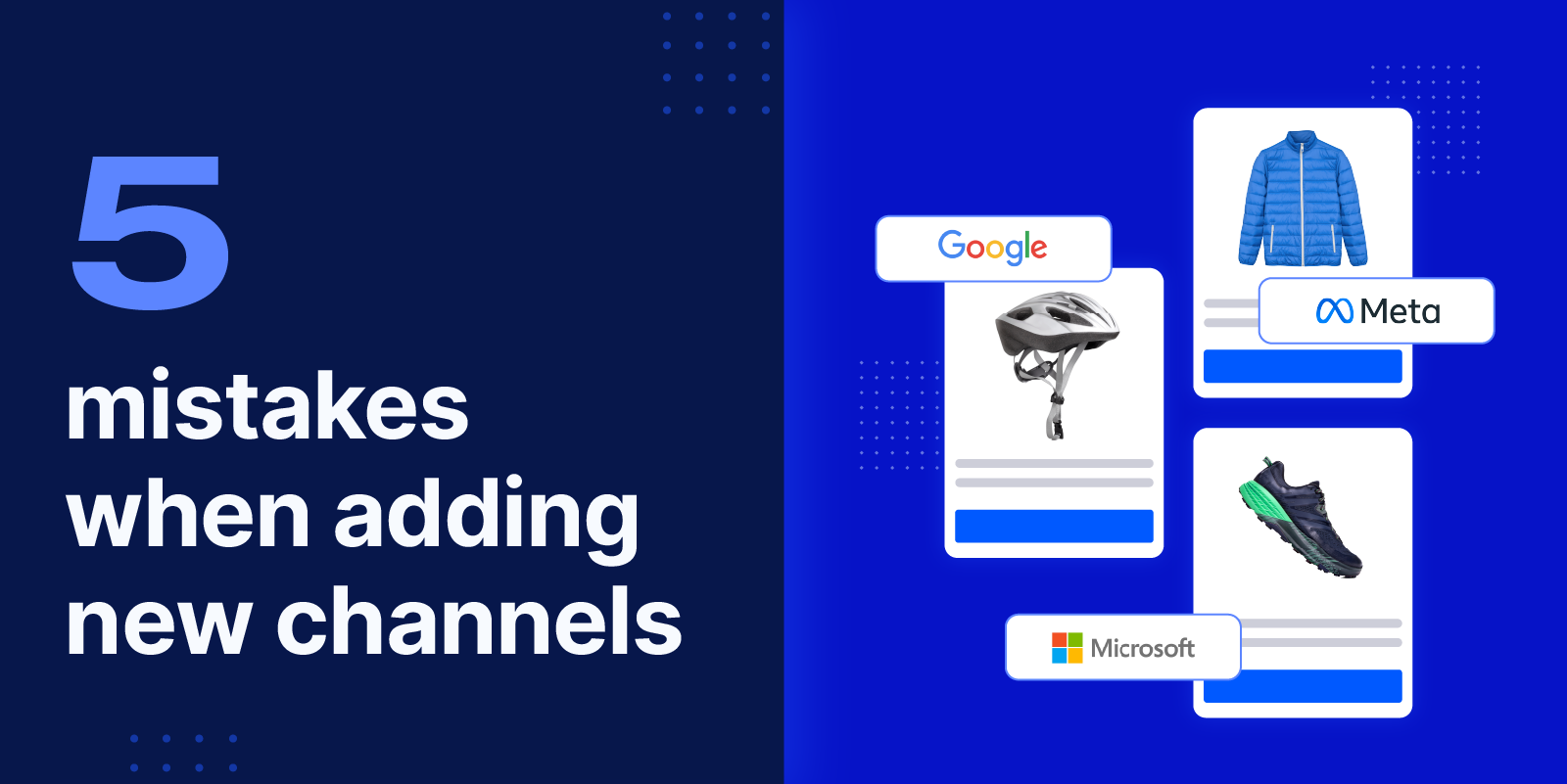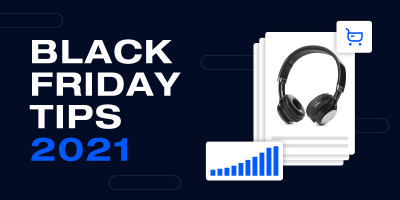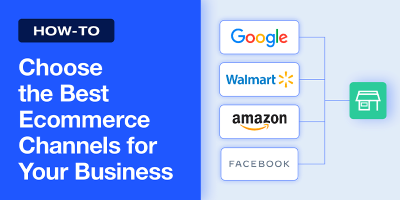Shoppers today interact with your brand and product across multiple touchpoints and channels before making a purchase, so adopting new social, advertising, and marketplace channels is extremely important for scaling your online business and driving additional revenue.
Consider these statistics:
- 73% of shoppers use multiple channels during their shopping journey
- Campaigns using three or more channels have 287% higher purchase rates than single-channel campaigns
- More than 90% of consumers are more likely to shop from brands that recognize, remember, and provide relevant offers and recommendations
While expanding your channel reach is valuable, you need to avoid the mistakes that stifle growth and end up wasting valuable time and resources:
Mistake 1: Going to market with unoptimized product listings
Think about the effort and fine-tuning that it took to improve sales on your primary online sales channel (such as your website). You can’t expect to be successful by taking that same product data and pushing it unedited to new sales channels, because now you have competitor listings to worry about.
Some of the optimizations that you implemented on your website are helpful, but you need to tailor your product data to the best practices of every channel to improve your search relevance.
For example, before using Feedonomics, one of our clients was pushing product data onto Google Shopping without digging into the necessary optimizations. The company’s hero product was a short-sleeved shirt, so the word “short” appeared in its titles and descriptions.
The merchant had only categorized products down to the “apparel” level, so Google’s algorithm showed the product alongside shorts instead of other shirts based on the information available, which limited the reach and performance of a best-selling product.
Product listing optimizations include:
- Creating consistent listings across all channels with clean titles, descriptions, bullet points, and more
- Inserting valuable keywords and product nouns into your titles
- Categorizing products accurately for each sales channel, including using the right subcategories
- Grouping product variants together
- Filling in as many category-specific or recommended attributes as possible
A transformation tool can help you optimize your source data for each channel’s best practices and improve performance.
“Having my feeds optimized by Feedonomics has really been wonderful for the business. There hasn’t been a downside. Pretty much every performance stat is better than what it was before.”
Mistake 2: Using different methods or solutions to list products on each sales channel
Running your business in silos—with different teams managing different channels or using disparate methods to run the listings on those channels—can be a huge drain on your resources and time. Channels also change at a fast pace, with new API and listing requirements requiring your teams to be specialists in every channel.
Ask your team how much time they’re spending optimizing feeds and resolving errors. You’ll quickly get an understanding of how your valuable resources are being diverted to tasks that fall outside their core functions.
As a result, expansion is slow, and your listings are inconsistent across channels. Scaling and getting support on each shopping destination becomes a nightmare.
Partnering with a team that provides hands-on feed support and a consolidated approach to catalog management lets you focus your resources on other important initiatives.
“The fact that you can have the one hub to power all of the feeds across the regions is a massive time saver for us. We’re not necessarily duplicating the process six to 12 times per brand. We can literally just make that change on the platform and the output files we want to apply it to. With that, it saves a lot of time and it does allow us to have a holistic view of how the current feed looks from a channels and countries perspective.”
Mistake 3: Not keeping your listings updated
When you’re using an omnichannel commerce model—advertising on various channels, listing products on marketplaces, selling at your brick-and-mortar store and other outlets—it’s difficult to ensure that your product information stays up-to-date everywhere you sell.
When channel requirements change or your inventory fluctuates, listings can become inaccurate, leading to item disapprovals, confused customers, overselling, and account suspensions.
Instead of managing your listings manually, find an automated way to update product data regularly across all of your channels.
This allows you to better strategize and stay organized:
- Show sale prices and promotions whenever you want
- Add and remove products after the initial catalog upload
- Track availability of products when inventory is spread across channels
Technology that streamlines catalog optimization, product listing, and inventory updates can ensure that changes in your source data are automatically synchronized across channels.
“Because Ricardo is an auction-based platform like eBay, the price [of the product] changes all the time. Depending on the bids, the price grows. So it’s very important for us to have very real-time price information shown in the ad. Every three hours, our feed updates the price in case it has changed.”
Mistake 4: Not resolving your listing errors in a timely manner
Not resolving listing errors quickly can be incredibly costly. This is particularly true for product promotions during peak seasons. What would it cost you if your ads went down on your biggest channels—or if your marketplace listings didn’t surface—during important shopping days like Black Friday and Cyber Monday?
Untimely error resolution can also result in account suspensions, which close off revenue streams.
This is a scary prospect, especially when you consider that listing errors and item disapprovals are common on major sales channels. There are many small details that can trigger one of these outcomes:
- Poorly structured data on your website
- Hidden characters in descriptions
- Policy violations
- Exceeding character counts
- Missing crucial product attributes
- Invalid values or improper syntax
It’s important to do regular feed maintenance and set up safeguards to protect your listings. The best feed management platforms have systems to automatically identify problems, alert you, and prevent them from spreading to all your channels.
For example, Feedonomics offers data governance safeguards with triggers for a slew of common problematic situations:
- Alerts for missing inventory, big price changes, empty titles, etc.
- Hard stops preventing bad listings from going live
- Automated retries for large product catalog uploads that time out
- Inventory buffers that prevent overselling
- Export conditions for outbound data
Free up your marketing teams to work on the best bidding strategies, campaigns, and creative, as opposed to focusing on error resolution.
“The biggest draw to me personally was the help with the support. I knew right away that would be like hiring another staff member.”
Mistake 5: Using an inefficient order management process
Let’s assume you’ve added the right sales channels, optimized your listings, and begun receiving an influx of orders as a result of your effort. Without a streamlined system to consolidate and manage these orders, you run the risk of damaging your reputation with order delays and fulfillment errors.
This happens if you’re relying on order management processes that aren’t built to scale beyond your primary sales channel.
You can use a robust platform like Feedonomics in conjunction with your order management system to streamline fulfillment operations in multiple ways:
Inventory buffers: These prevent overselling by allowing you to set a certain quantity of products to be reserved, so you can display less inventory than you have on hand. For example, you could choose to automatically mark your product “out of stock” on Amazon and Target whenever your inventory dips below four units.
Order routing and splitting: If you’re using more than one fulfillment solution, you can specify rules that direct order information to the appropriate fulfillment method. Orders can be routed by brand, SKU, availability, custom labels, and other product data. These criteria can even be used to split line items from the same order to different fulfillment methods.
Automation and consolidation: Rather than manually processing orders from each sales channel, you can automatically pull order information at regularly scheduled intervals, which saves you time and reduces errors during fulfillment. The order information from your channels is passed through to your OMS or ecommerce platform, so you can take action on the orders from a single dashboard.
Translate order data: Different selling channels use different data formats, which makes translation a challenge if you want to fulfill your orders through your existing systems. Translating data into a usable format is a crucial aspect of multichannel selling when data is funneled downstream.
“That is another thing we noticed–after the transition, we received far fewer negative reviews than we had before. Especially from customers asking, ‘Where’s my tracking number?’, ‘Where’s my package?’, or ‘Why isn’t my package here already?’ The orders feed into BigCommerce instantly, and now we can sometimes get the package out the same day the order is placed.”
Making expansion easy
Don’t let these common mistakes stifle your brand’s ability to scale. Feedonomics has solutions for advertising and marketplaces that streamline the listing process. Find out if your listings are optimized for your channel mix with a complementary omnichannel consultation.
Find out if your listings are optimized for your channel mix

With its leading data feed management platform, Feedonomics helps brands, retailers, and agencies optimize and list products on hundreds of shopping destinations around the world. Learn more about our full-service solutions for advertising channels and marketplaces.









